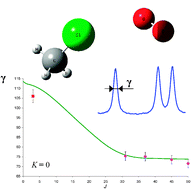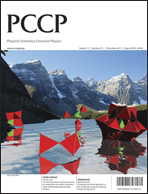The case of symmetric tops CH3X (X = Br, Cl, F, …) perturbed by non-polar diatoms Y2 (Y = N2, O2, …) is analysed from the viewpoint of theoretical collisional broadening of their rotational lines observed in atmospheric spectra. A semi-classical approach involving an exponential representation of the scattering operator and exact trajectories governed by the isotropic potential is presented. For the first time the active molecule is strictly treated as a symmetric top and the atom–atom interactions are included in the intermolecular potential model. It is shown for the CH3Cl–O2 system that these interactions contribute significantly to the line width for all values of the rotational quantum numbers J and K. Additional testing of modifications required in the semi-classical formalism for a correct application of the cumulant expansion is performed and it is shown that the use of the cumulant average on the rotational states of the perturbing molecule leads to entirely negligible effects for the not very strongly interacting CH3Cl–O2 system. In order to check the theoretical predictions and to extend the scarce experimental data available in the literature to higher values of the rotational quantum numbers, new measurements of room-temperature O2-broadened CH3Cl rotational lines are carried out by a photomixing continuous-wave terahertz spectrometer. The experimental line widths extracted with a Voigt profile model demonstrate an excellent agreement with theoretical results up to very high J-values (J = 31, 37, 40, 45, 50).

You have access to this article
 Please wait while we load your content...
Something went wrong. Try again?
Please wait while we load your content...
Something went wrong. Try again?


 Please wait while we load your content...
Please wait while we load your content...